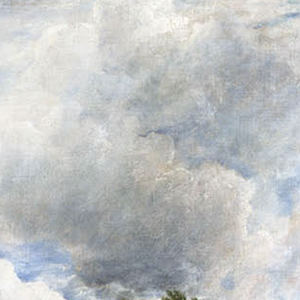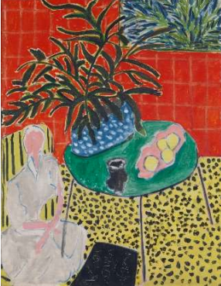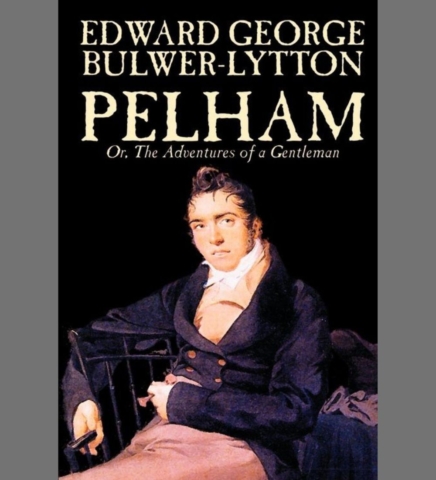Verse, Velvet, and Vanity; Love The French Romantics Dandies
By Agathe Vanmassenhove
Imagine walking down the street, Quai d’Anjou on Saint Louis Island in Paris, the year, 1857. Les Fleurs du Mal (Flowers of Evil) the collection of poems by Charles Baudelaire had just been published. The whole of society was shocked by it, so much so that the written words went to trial, and six of the poems were censored until after World War II. Back on the street in 1857, a door closed violently. Looking up and there he is, the lead Dandy of all the poets. Baudelaire. Find out more at Verse, Velvet, and Vanity; Love The French Romantics Dandies.
The Frenchman Baudelaire, known by many for his poems, impacted the Romantic genre; Romanticism was a literary movement in Europe from the late 18th century to the mid-19th century. It was a reaction to other movements that had gone before. Romantic writers emphasized emotion, nature, and the individual experience. However, Baudelaire’s ideas were seemingly influenced by his being a Dandy.
The French Romantics, including poets artists and writers, were characterised by their use of great emotions, heroic feelings of great enthusiasm as well as immense despair with life within their work.
The Romantics were against reason, and were often tormented by their inner selves. These intense emotions within their work would most likely be highlighted with metaphors of Nature, Religion, and Love.
A French Dandy in the 19th century was seen as an extension of the British model invented by Beau Brummell. While the English Dandy was a master of controlled elegance, a reflection of good taste rather than flamboyance. For the French, the characteristic of the Dandy had a philosophical, and political element.
The French Dandies took it to a greater extent as they were more than foppish and took this way of dressing and behaving of the British Dandies into their work and beliefs.
The Dandy could only appear during transitional periods as explained by Baudelaire himself in his essay The Dandy, from the Painter of Modern Life:
“Dandyism appears above all in periods of transition, when democracy is not yet all-powerful, and aristocracy is only just beginning to totter and fall”.
Baudelaire
They were often royalist and mostly rejected the bourgeois values while still operating within high society. They would dress up elegantly and always behave in a way that nobody could predict. Whether it’s a shocking pet or a new wild haircut.
For Dandies, only unnecessary things were beautiful. They always wanted to grab everyone’s attention whilst being blasé and expressing boredom with everything. Yet on the inside, most of them were tormented by their need to feel important.
Baudelaire was indeed a Romantic and a Dandy and these two factors impacted each other when it came to his poetry. In Baudelaire’s poem, The Dandy from 1863, he wanted to educate with his sonnets whilst at the same time praising the Dandy.
Not all Dandies were Romantics but mostly all Romantics had a bit of dandyism in themselves.
Although Baudelaire is the most well-known Romantic Dandy poet, Barbey d’Aurevilly in reality was the first French Romantic poet to theorise about this way of life in his essay; Du Dandysme et de George Brummell (From Dandyism and George Brummell).
In this essay, he portrayed his version of being a Dandy. At the time, Dandies were only portrayed in French literature in the Realism style. They weren’t seen as thinkers but only as a model or a piece of boudoir furniture. Barbey d’Aurevilly, as a Romantic, decided to write otherwise.
Seen somewhat like a bounce-back from Realism the goal for Romanticism was to make a statement against what had gone before. The Dandy was seen as vain as well as intellectually superior. Barbey d’Aurevilly portrayed the Dandy as the only person capable of living a life like this. To him, it was the price to pay for being this intelligent.
While Barbey d’Aurevilly and Baudelaire presented Dandyism close to the British variant, some other Romantic poets took the term and adapted it to their person.
Théophile Gautier was considered a real Romantic Dandy. Instead of concentrating on the languor of life, of being jaded, he had a real passion for art and the imaginary. He wasn’t a distant Dandy, but mostly one driven by passion, exoticism and the fantastic; themes that could be easily pointed out in his romantic poems such as his collection Émaux et Camées (Enamels and Cameos).
Gautier’s passion and extravaganza gave him Baudelaire’s full attention. Baudelaire then went on the dedicate his book Les Fleurs du Mal (Flowers of Evil) to him; saying “to the impeccable poet, to the perfect magician of letters, from [his] most venerated master and friend” « au poète impeccable, au parfait magicien dès lettres, à [son] très vénéré maître et ami ».
The two had previously met at the Club des Hashischins, where Gautier invited his friends to perform drug-testing experiments for the doctor Jacques Joseph Moreau de Tours, a French psychiatrist and member of the Club des Hashischins.
Gérard de Nerval, (a friend of Gautier) both of whom were members of the Bouzingo club, a group of eccentric Romantics from the 1830s, could be seen as a Dandy. In some respects, Gérard de Nerval’s behaviour in his daily life matched that of a Dandy. He had a very specific way of dressing, as well as an ironic way of behaving in society. Once, he was seen walking a lobster outside of the Grand Palais in Paris, and after arousing multiple sights, he spoke
“Why should a lobster be any more ridiculous than a dog? Or a cat, or a gazelle, or a lion, or any other animal that one chooses to take for a walk? I have a liking for lobsters. They are peaceful, serious creatures. They know the secrets of the sea, they don’t bark, and they don’t gobble up your monodic privacy like dogs do. And Goethe had an aversion to dogs, and he wasn’t mad!”
Gérard de Nerval
While it was said he wasn’t mad, de Nerval sunk into possible madness towards the end of his life and was placed in a hospital. While there he wrote the famous “Les Filles du Feu” (The Daughters of Fire) published with “Les Chimères” (The Chimeras). Despite his Dandy ways, he was also a truly Romantic poet. He was known as a Bohème man, meaning he was very frivolous and debauched.
Another well-known Dandy at the time was Alfred de Musset. Like other Romantic poets, he felt helpless in the face of reaching absolute beauty leading to his refuge in debauchery. His writings were also marked by a sense of humour and irony, especially when it came to denouncing what he felt were the failings of society.
Whist his poems represented his tumultuous Dandy life, they also depicted his passionate and poisonous relationship with George Sand. She was a French novelist with whom he had six-year age difference. They spent two years on and off as lovers and correspondents. He wrote a collection of four poems called ‘Les Nuits’ (The Nights),’ in which he passionately depicted their tumultuous relationship.
In his theatre piece Lorenzaccio, playwriter Alfred de Musset created an interesting character with the same personality de Musset embracing the Dandy and the Romantic; the character Lorenzaccio in the play was both depraved and cynical.
While Dandy was very specific in England, once brought to France by Baudelaire and Barbey d’Aurevilly, the Romantics took it to a new and different level.
On one hand the British Dandy was a fop, a vain man of beauty of good breeding and of high society that everyone wanted to be seen with. The French Dandy shared the same foppish characteristics but used this within their creative world.
Defending the aristocracy, being well-dressed and always making a statement. Being frivolous, yet at the same time being jaded, whilst also being attracted to the absurd.
All Romantics were dandies to some extent because of their constant feeling of melancholia and need to find a meaning for their lives. This relationship between the Dandy and the Romantic seemed unique to these poets and delivered the world unique poetry.
If you enjoyed reading Verse, Velvet, and Vanity: The French Romantics as Dandies , then why not try The Irresistible Dandy in the Written World.
.Cent London, Be inspired; Get involved









